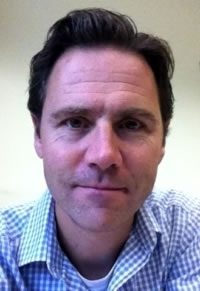Jeff Orchard
Wednesday 8th January 2014
Time: 4pm
Basement Seminar Room
Alexandra House, 17 Queen Square, London, WC1N 3AR
Spatial Navigation and the Fourier Transform
Animals maintain an internal representation of where they are in space. How? Recent work has pointed to interference patterns between neural oscillators as a mechanism. Oscillators in the entorhinal cortex (EC) have been shown to adjust their frequency in proportion to the animal’s velocity. Hippocampal neurons receive output from different combinations of the oscillators, and can exhibit place fields, grid fields, and other spatial maps. We propose a framework based on the Fourier transform to understand this process. Our model also introduces a method for oscillator coupling, stabilizing the system. Extensions of the model include sensory updating to correct for drift. All this is implemented in spiking leaky integrate-and-fire neurons using the Neural Engineering Framework.
Bio:
Jeff Orchard received degrees in applied mathematics from the University of Waterloo (BMath) and the University of British Columbia (MSc), and received his PhD in Computing Science from Simon Fraser University in 2003. Since then, he has been a faculty member in the Cheriton School of Computer Science at the University of Waterloo in Canada. Prof. Orchard's research focusses on computational neuroscience, using mathematical models and computer simulations of neural networks in an effort to understand how the brain works. His research includes decision-making network models of the basal ganglia, unsupervised learning of visual networks, spatial navigation, and population coding. He has also published research in image processing and medical imaging.
